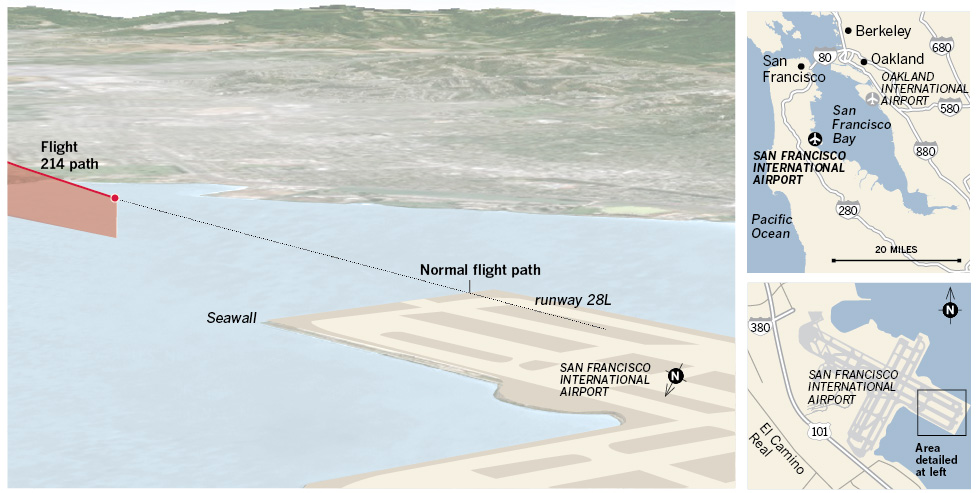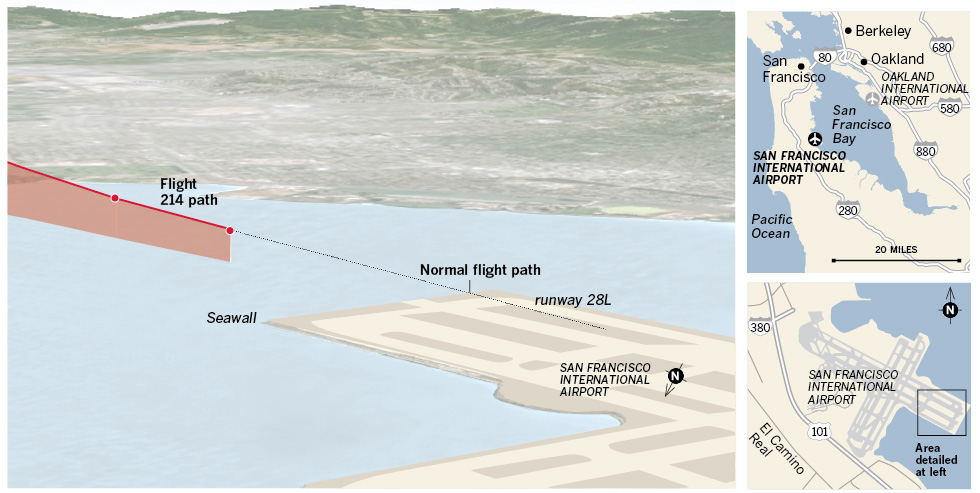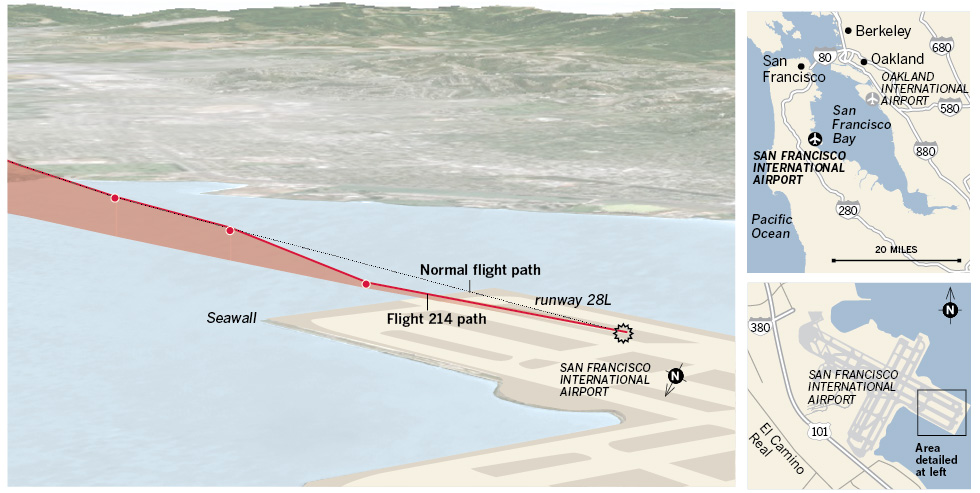Crash landing at San Francisco International
Asiana Airlines Flight 214 came in too slow for a safe landing and was on the verge of stalling before it struck the seawall at the end of the runway, severing the tail and scattering debris along the pavement. Captain Lee Kang Kuk, 46, was landing at San Francisco International Airport for the first time and had an instructor beside him.

Sources: Flightaware.com, National Transportation Safety Board
Credits: Graphics reporting by Dan Weikel



